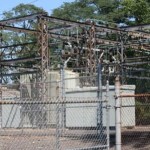Governor Christie Builds on Record of Growing Renewable Energy Sources with Action to Strengthen Solar Market
Bipartisan Legislation Advances Administration’s Commitment to Development of Renewable Energy Resources in New Jersey
Trenton, NJ – Taking action that continues the Christie Administration’s commitment to fostering the development of renewable energy resources in New Jersey, Governor Chris Christie today signed into law bipartisan legislation to strengthen and encourage the continued growth of New Jersey’s solar industry, while protecting ratepayers from increased costs. The bill, S-1925, couples an acceleration of the renewable portfolio standard (RPS) for solar energy with a reduction of the solar alternate compliance payments, meeting an important goal of the Governor’s 2011 Energy Master Plan (EMP), strengthening the solar market in New Jersey, and securing the state’s place as a national solar energy leader.
“Since my time running for office, I made it clear that my Administration would be unrivaled in our aggressive support for the development of renewable sources of energy in New Jersey. Renewable energy not only helps meet our goals of increasing sustainability and protecting the environment, but can be an engine for economic growth and the creation of good-paying jobs for the people of our state,” said Governor Christie. “The bill I am signing today furthers these goals and will help us remain a national leader in the solar energy industry as we continue to promote innovative approaches to solar development, like developing landfills and other unusable lands and transforming them into sources of usable clean energy, all while holding down costs for families and businesses.”
Solar Alternative Compliance Payments (SACPs) set a ceiling on the market price of Solar Renewable Energy Certificates (SRECs”), which the suppliers and providers of electricity are required to purchase in an amount that satisfies the annual RPS requirement. The Division of Rate Counsel estimates that the law will save ratepayers approximately $1.076 billion over the next 15 years as compared to the current solar subsidy schedule.
Demand for SRECs is set by the Renewable Portfolio Standard (“RPS”). Under the bill, the 15-year RPS schedule is changed from a fixed megawatt requirement each year to a percentage of overall energy usage in New Jersey, ensuring that the level of solar obligation rises and falls with overall energy demand, which can vary due to economic factors as well as the success of energy efficiency and conservation programs.
Under the legislation, the Board of Public Utilities (“Board”) has the authority to review all proposed grid-supply solar projects, except for a limited amount (80 MW a year) for Energy Years 2014 through 2016, consistent with the Christie Administration’s objective of promoting dual-benefit net-metered projects and discouraging large-scale solar projects on farmland and open space; creates a sub-program to incent the development of solar projects on landfills and brownfields; and lowers costs for participating schools and government entities through net-metering aggregation.
New Jersey installed more solar capacity in the first quarter of 2012 than any other state, and led the nation in solar installations on commercial and industrial properties in 2011. There are over 16,000 solar installations on homes, offices, schools, and hospitals throughout the state. The state currently has over 800 MW in installed capacity and another 600 MW of solar in various stages of installation. Of the electricity generated in New Jersey, over 1% now comes from solar energy.
Governor Christie has acted on a commitment to aggressively support renewable energy generation in New Jersey. According to the Department of Energy, New Jersey has the 7th highest Renewable Energy Portfolio Standard in the nation at 22.5% by 2021. 13 states maintain no renewable energy standard whatsoever. In addition, Governor Christie’s 2011 Energy Master Plan commits to no new coal-fired plants in New Jersey, ensuring that additional generation capacity comes from cleaner sources.
Sponsors of the legislation include Senate President Stephen M. Sweeney (D-Cumberland, Gloucester, Salem) and Senator Bob Smith (D-Middlesex and Somerset).











Will You-tube’s estimates on the cost of this boondoggle be consistent with his estimates on NJ’s economic growth—he only missed his estimate by a factor of 700%—Buffoon.
How many of these solar installations would’ve happened without subsidies?
Big boy is a fraud. This green energy crap is subsidized by ratepayers to the tune of one billion per year. We pay higher electric bills for this crud. Why does big boy support this? Because he is as liberal as Christie Whitman and Tom Kean Sr. Big boy is a Rockefeller republican. A sickening fraud.
with the big guy:..may God save the already over-burdened taxpayers of NJ from any Solyndra-style nonsense and boondoggles!! please!.. I say: dig, drill, make, and sell, baby, and now, wherever we can properly find it, use it,and market it!.. the last thing we need is taxpayer-funded-for-friends,phony start-ups,and expensive, ultimately useless crap, like the Feds did and are still doing!..and, why does “green” usually wind up being “Blue”?!
So many parts of this issue cannot be addressed in a comment.
solar is real and does work and, thanks to China illegally dumping pv in the world market, is radically dropping in price. When Christie Whitman created the clean energy program and I was on my first installed around 01, the panels cost over 6 dollars a watt and today most companies pay less then a dollar. In 2001 a 10kw system cost 80000+ and today the market is around 50000 or less…. you can lease it for no money down and a reduction in your electric bill for the life of the deal…. you can have the gas co finance the systems….. point being its real and safe investment long term…
The way the state incentives are funded is from money collected from ratepayers; its through what’s called societal
Societal benefits charge… in addition to that there were SRECs…. a renewable portfolio standard was adopted and utilities either buy dregs or install renewables.. the goal was 20% by 2020
Simple answer—you want solar panels on your roof—spend your own f&^cking money—not mine. Any product that is not 100% market driven doesn’t work–period.
[…] IEEL – K.U.Leuven. Counselor Energy. Cabinet of the Vice-Minister-President, … Retrieve DocConsumers Energy Announces Opposition To Legislation To Amend 2008 Energy Law And Raise Electric Bil…eight:bold; text-transform:capitalize;">Consumers Energy Announces Opposition To Legislation To […]
There is no such thing as a 100% market driven product….. except maybe food prostitution and drugs…. everybody needs roads to get to the market….